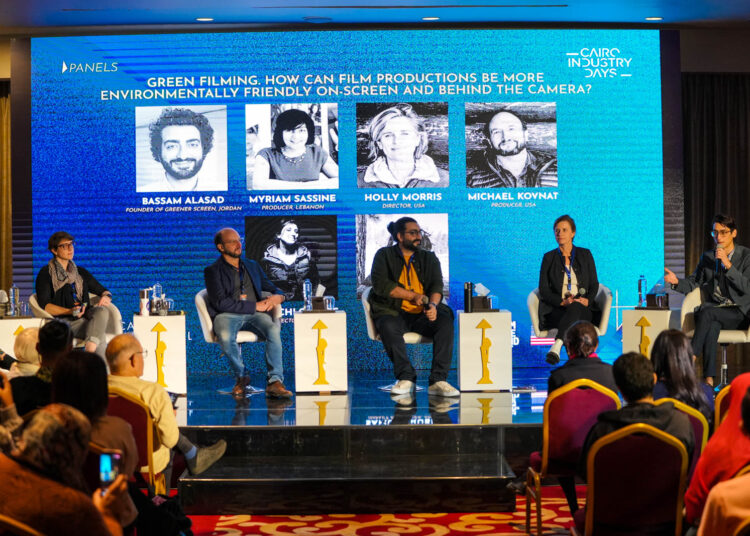Debates about climate change can be rather complicated as many people may not understand the risks presented in a scientific way.
However, the magic wand that can always have a great impact on people is cinema, because it is easier to raise awareness about scientific fact through an entertaining movie.
However, the film industry worldwide, despite challenges related to funding, is turning out more ‘green’ films on climate change and creating locations that are environment-friendly, even behind the camera.
As part of the 44th Cairo International Film Festival, the 5th Cairo Industry Days (a festival within a festival) hosted a panel discussion, ‘Green Filming: How can film production be more environment-friendly on screen and behind the camera?’
The panel, coordinated by Spanish producer Samuel Rubin, was held at one of Cairo’s hotels in the presence of many filmmakers. The speakers on the panel were Bassam Alasad (founder of Greener Screen, Jordan), Myriam Sassine (producer, Lebanon), Holly Morris (Director, USA), Michael Kovnat (Producer, USA) and US documentary filmmaker Deia Schlosberg.
Rubin opened the discussion outlining the challenges filmmakers face and what hinders producers from making green films.
For his part, Alasad said he and his team spoke of convincing filmmakers to adopt more environmentally friendly practices, but filmmakers in the Middle East do not usually consider this because they are more concerned with obtaining funds for their work.
The second challenge was how festival organisers be persuaded to discuss green topics.
Alasad said there should be platforms to educate filmmakers as well as audiences about green films.
Lebanese producer Myriam Sassine said that she is new to the field of climate in cinema, but she has worked in production for 12 years. On a personal level, she said, she is interested in climate change and environmental issues, especially in Lebanon, which has been suffering from poor waste management in 2010.
“Garbage was everywhere in all the streets and it was a frightening scene,” Sassine said.
“Therefore, a film on environment conservation was urgently needed. It started as a short film but became longer,” she added, noting that there must be awareness of the issue of the environment and sustainability.
“One of the challenges is convincing people that sustainable filmmaking is easy and costs no more than conventional filming,” she said.
US director and writer Holly Morris also confirmed the importance of making green movies, saying that she started in the film industry with scriptwriting and was interested in women’s issues, but then her interest in the environment in the film industry was greater.
“However, filmmakers usually do not have sufficient funding for that,” Morris said.
“Research by Good Energy, a non-profit story consultancy for the age of climate change, suggests that 43 per cent of mainstream audiences learn about climate through documentaries, 33 per cent from reading newspapers and 24 per cent from fictional films,” Rubin said.
US Documentary director Deia Schlosberg said that people learn most through documentaries about the climate crisis from the news which they see every day.
US Producer Michael Kovnat said he started in journalism and went over to photography, and thereafter he decided to take on environmental issues through film.






Discussion about this post